The great Raphael Sanzio (Urbino, 1483 - Rome, 1520) spent a large part of his career in Rome: in fact, the painter left Florence at the end of 1508 after spending four years there and moved permanently to Rome, where he was to remain for the rest of his life (in the capital of the Papal States he disappeared on Good Friday 1520). The Urbino was called to the papal court by Pope Julius II, who had gathered the best artists of the time (in the same years, Michelangelo was working on the vault of the Sistine Chapel), and for Raphael the call to Rome was a real turning point, because working for the pope brought him fame and undying success. Raphael had the opportunity to work not only for the pontiff but also for important patrons such as the banker Agostino Chigi, for whom he worked in his villa at the Lungara, the Villa Farnesina, and for other important figures of the time. In addition, Raphael started a flourishing workshop in Rome attended by pupils of the highest caliber, who in 1527, after the Sack of Rome (and in some cases even before: this is the case, for example, of Giulio Romano), would take Raphael’s word to various cities in Italy. We speak of artists such as Perin del Vaga, Giovanni da Udine, Raffaellino del Colle, Polidoro da Caravaggio, Giovanni Francesco Penni, Vincenzo Tamagni, and many, many others.
Raphael, in Rome, worked as a painter, as an architect, as a designer of sumptuous decorations and refined tapestries (such as those executed for the Sistine Chapel): therefore, one cannot say that one has known Raphael without visiting the capital. What are the places in Rome where you can find Raphael’s works? For our Five Places in Two Days format, we focus on the testimonies of the painter Raphael (thus not counting his contribution as an architect: in fact, there are several buildings he worked on in the city) for an itinerary through the art of one of the greatest artists ever.
The journey can begin...outside Italy, in the Vatican Museums, where we focus mainly on two parts of the itinerary: the Vatican Rooms (also known as the “Raphael Rooms”) and the Vatican Picture Gallery. It was in the Vatican Rooms that Raphael’s Roman adventure began: to be frescoed first was the Stanza della Segnatura (so named after the office it housed, the Segnatura di Grazia e Giustizia, the principal papal tribunal), where Raphael painted the celebrated School of Athens and other archaic frescoes such as the Dispute of the Sacrament and Parnassus. Completed in 1509, Julius II liked the decoration so much that it led him to decide to entrust Raphael with the remaining rooms, which are named instead after the frescoed episodes: the Room of Heliodorus, the Room of the Burning of the Borgo, and the Room of Constantine. In the Pinacoteca Vaticana, on the other hand, there are masterpieces that help the visitor reconstruct Raphael’s career, as they refer to different phases of the Urbino painter’s career: the Pala degli Oddi and related panels of the predella belong to the Umbrian period, the Madonna of Foligno to the first years of his Roman sojourn, while the Transfiguration is one of the great masterpieces of the last Raphael.
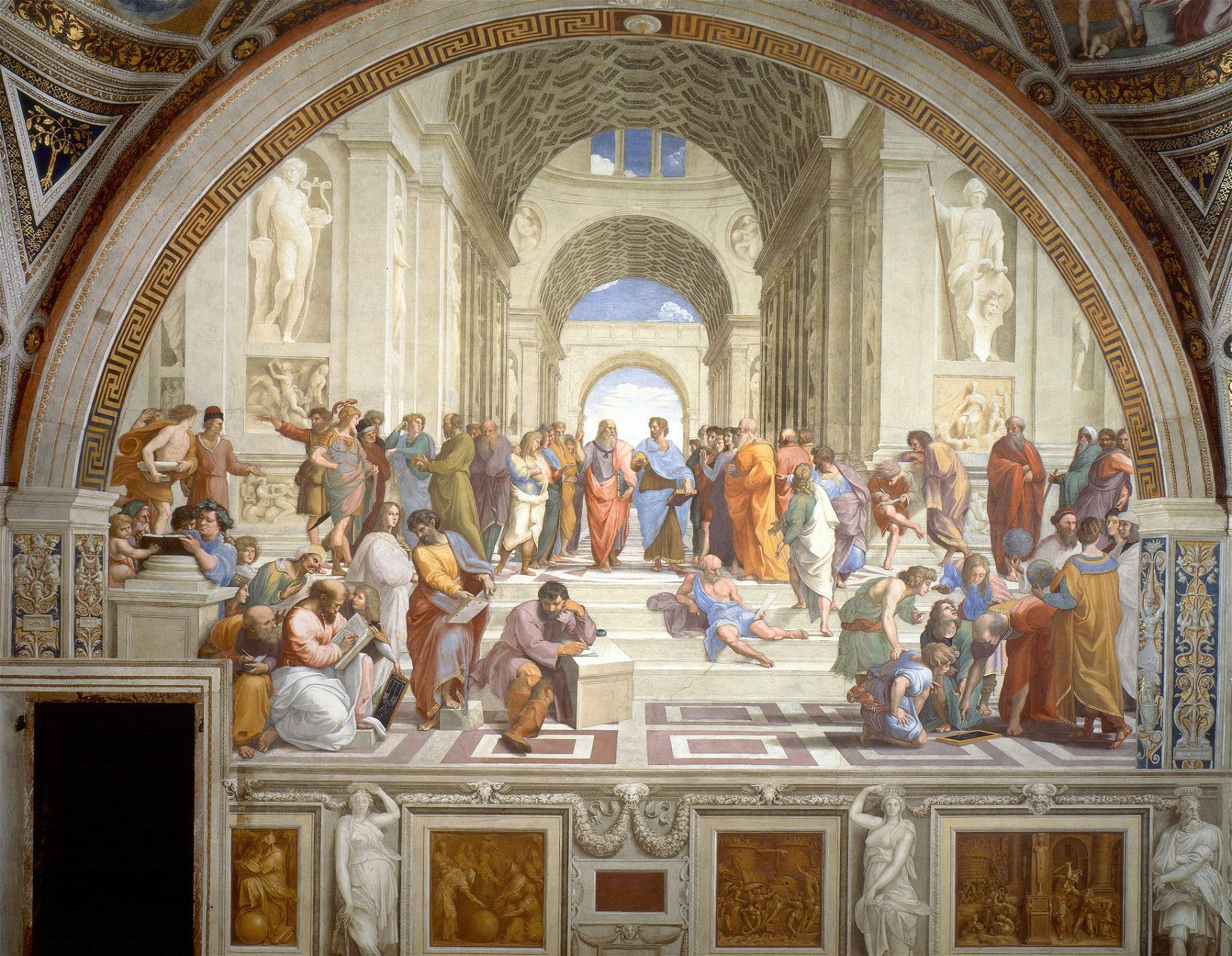 |
| Raphael Sanzio, School of Athens (1509-1510; fresco; Rome, Vatican City, Vatican Palaces, Stanza della Segnatura) |
 |
| Raphael, Transfiguration (1518-1520; tempera grassa on panel, 410 x 279 cm; Vatican City, Vatican Museums, Pinacoteca Vaticana) |
The world-famous Fornarina, painted by Raphael in the last years of his life (between 1518 and 1519), is one of the main reasons for visiting the National Gallery of Ancient Art in the Palazzo Barberini building. The Fornarina is an oil on panel and, according to legend, depicts Margherita Luti, who, again according to myth, was the painter’s mistress. In seventeenth-century inventories, the work is mentioned simply as “a portrait on panel of a woman, holding one hand to her breast and the other between her thighs, naked, with a red cloth”: the name Fornarina, in fact, is not attested before the eighteenth century, and is due precisely to the “myth” (Margherita Luti was the daughter of a baker). Was she really Raphael’s girlfriend? Of course, we cannot know for sure: what is certain is that the possible romance has inspired writers and artists of all times and, even if only alleged, is one of the most famous liaisons in the history of art.
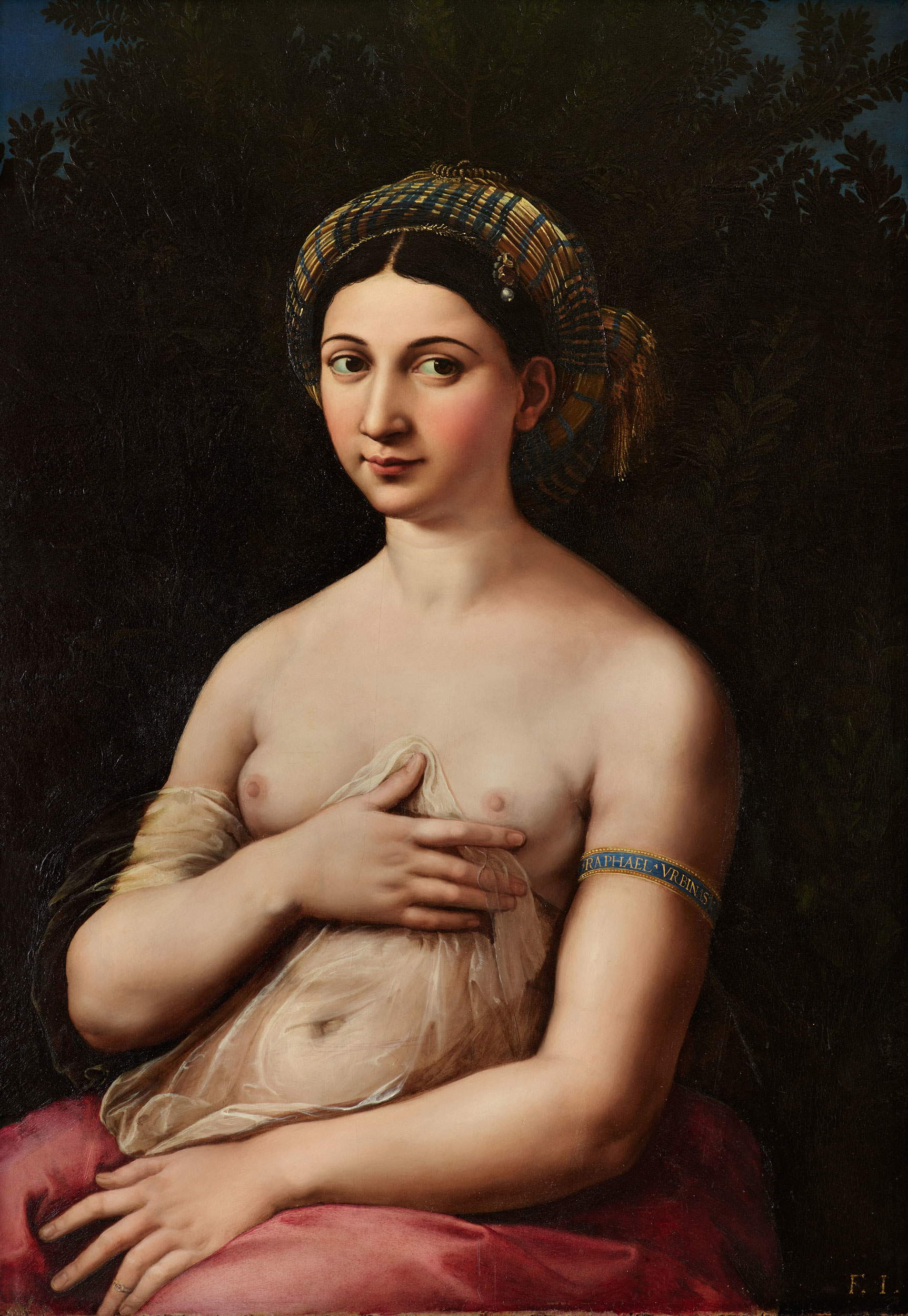 |
| Raphael, Portrait of a Woman in the Clothes of Venus (Fornarina) (c. 1519-1520; oil on panel; Rome, Gallerie Nazionali dArte Antica di Roma, Barberini). National Galleries of Ancient Art, Rome (MIBACT) - Hertziana Library, Max Planck Institute for Art History/Enrico Fontolan |
A Raphaelesque tour of Rome is impossible without visiting the Galleria Borghese where, in addition to a Manly Portrait from the Umbrian period and the celebrated Lady with the Unicorn from the Florentine period, one of Raphael’s greatest masterpieces is preserved, namely the Deposition, also known as the Borghese Deposition since in 1608 it entered the collection of Cardinal Scipione Borghese, the founder of the collection that today forms the main nucleus of the Gallery: Scipione was an unscrupulous collector and did not mind having the Deposition literally smuggled out of the church of San Francesco al Prato in Perugia, where it adorned the Baglioni chapel (the lords of Perugia had commissioned it from Raphael when he lived in Florence), and taken to Rome. The protests of the Perugians were to no avail, because Pope Paul V issued a motu proprio whereby the work officially reached Rome as a gift to Scipione (later the Borghese family, to partially satisfy the Perugians, had copies made, one of them by Cavalier d’Arpino: today it is in the National Gallery of Umbria). A work that sums up several sources of inspiration (from Michelangelo to ancient statuary), the Deposition is one of the artist’s youthful masterpieces, to which we have also devoted a substantial in-depth study on these pages.
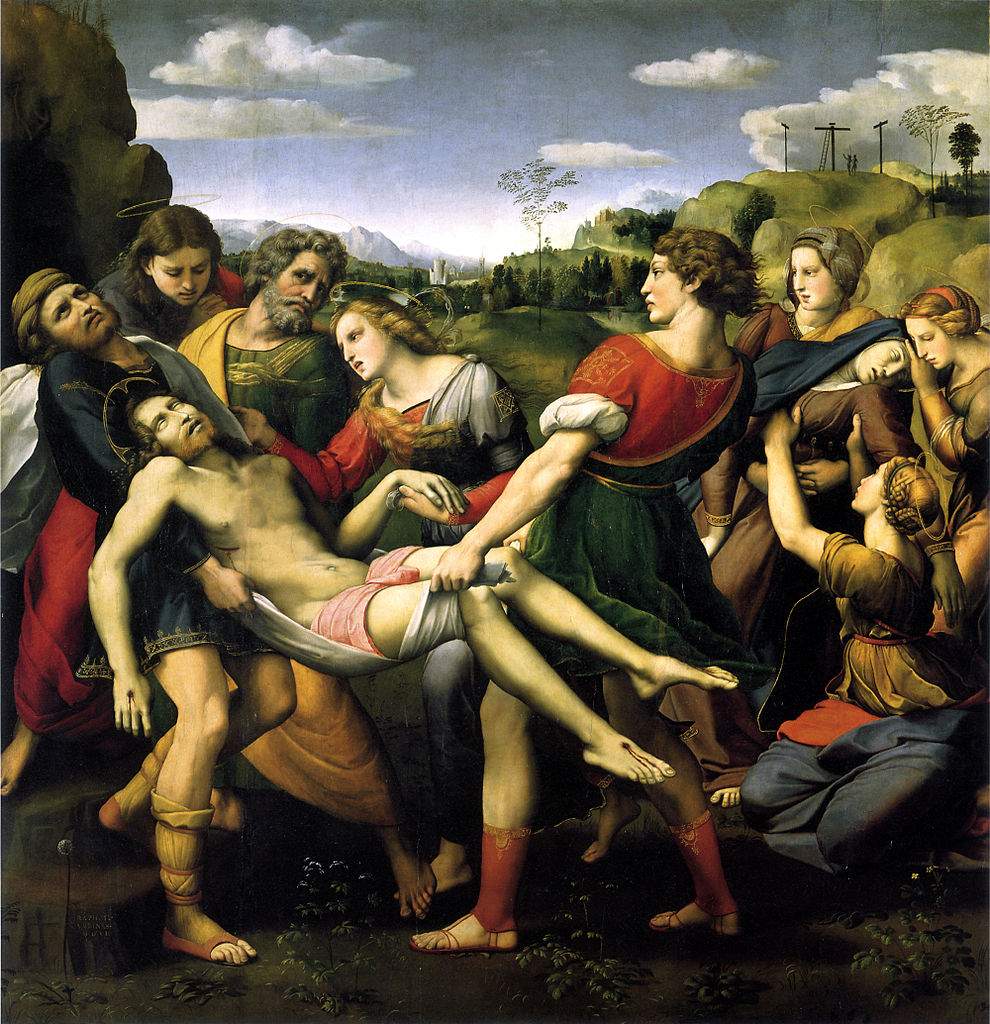 |
| Raphael, Borghese Deposition (1505-1507; oil on panel, 174.5 x 178.5; Rome, Galleria Borghese) |
The frescoes in the Chigi Chapel in Santa Maria della Pace are one of several commissions that the wealthy Sienese banker Agostino Chigi entrusted to Raphael. After having him design the Chigi chapel in Santa Maria del Popolo, the large family chapel, the papal banker thought of commissioning the Urbino to decorate his private chapel in Santa Maria della Pace. The painter imagined two large arches, one with figures of the Sibyls and the other with figures of the Prophets. Of the two, only the one of the Sibyls is believed to be autograph. The arch of the Sibyls dates from 1514 (although the commission is slightly earlier) and is perhaps the least known of Raphael’s Roman works, although it is of great importance because it is one of the most irrefutable proofs of the painter’s fascination with the great figures Michelangelo painted on the vault of the Sistine Chapel: Raphael’s Sibyls look precisely like those of his great rival.
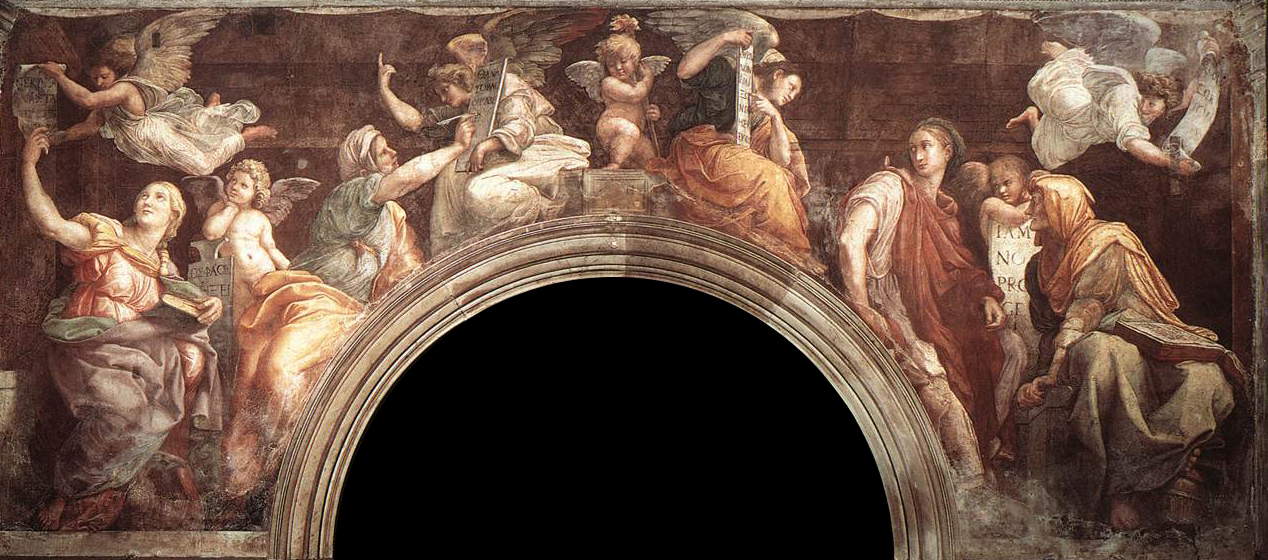 |
| Raphael, Sibyls and Angels (1514; fresco; Rome, Santa Maria della Pace) |
Raphael worked for a long time in the villa at the Lungara that Agostino Chigi had built between 1506 and 1512 to the design of one of his fellow citizens, the young architect Baldassarre Peruzzi, who at the time of the villa’s design was only twenty-five years old. The Villa Farnesina was then decorated with works by the major artists active in Rome at the time, and it certainly could not miss Raphael, who worked here, at first between about 1511 and 1512 frescoing the Sala di Galatea with one of his best-known works, the Trionfo di Galatea, working closely with other artists, including his rival Sebastiano del Piombo, who painted the enormous Polyphemus in the same room, right next to Raphael’s Galatea (and it’s not often you see two artists in close competition working on the same wall!). Raphael returned to try his hand at the Villa Farnesina a few years later, when he designed the decoration of the Loggia di Psiche, drawing the frescoes that would later be executed by his pupils, namely Giulio Romano, Raffaellino del Colle, Giovanni Francesco Penni and Giovanni da Udine.
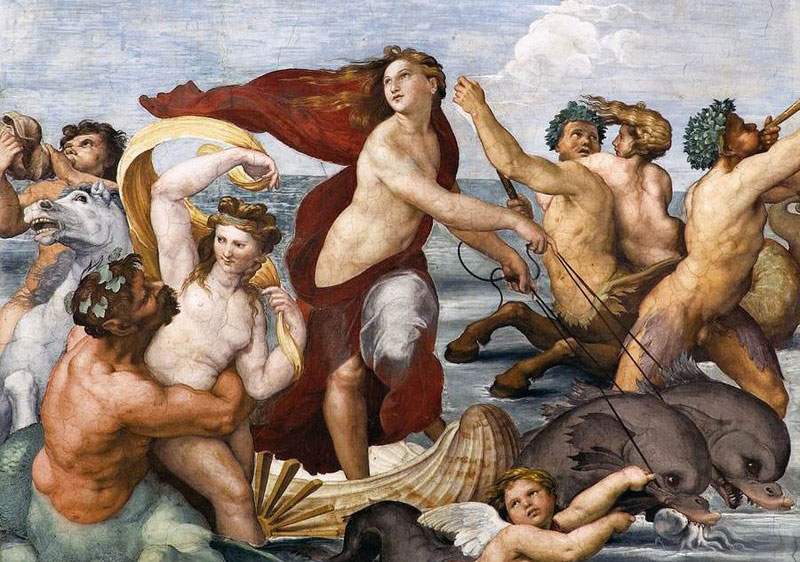 |
| Raphael Sanzio, Triumph of Galatea, detail (c. 1512; fresco, 295 x 225 cm; Rome, Villa Farnesina) |
 |
| The Loggia of Cupid and Psyche at the Villa Farnesina |
 |
| Raphael's works in Rome: five places to see in two days |
Warning: the translation into English of the original Italian article was created using automatic tools. We undertake to review all articles, but we do not guarantee the total absence of inaccuracies in the translation due to the program. You can find the original by clicking on the ITA button. If you find any mistake,please contact us.